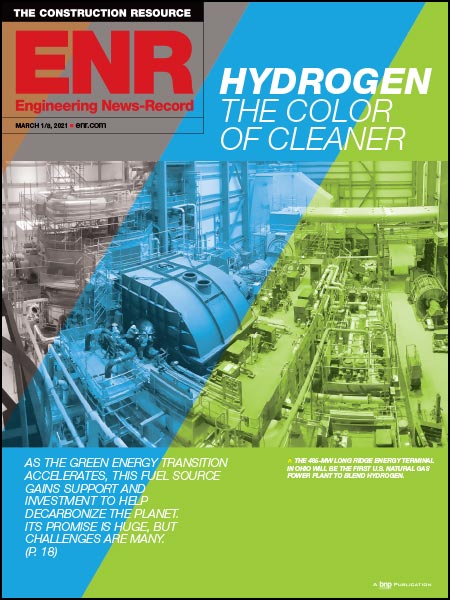
The U.S. Environmental Protection Agency's proposal to reduce carbon emissions from existing powerplants continues to generate controversy as states grapple with tight deadlines to develop plans to meet aggressive targets that begin in 2020.
But environmental groups and congressional supporters say the plan, released in June, could be strengthened to adequately address the challenge of climate change.
"When you look at the science of global warming, we need to reduce our carbon [output] here in the U.S. by 80% by 2050, and we need to make a serious push for that, especially in the power sector," says Julian Boggs, federal global warming director for Environment America, a public advocacy group.
The plan sets individual target reductions for each state to achieve by 2020 and 2030 but gives states flexibility to work alone or through regional partnerships— such as the existing regional greenhouse-gas initiative (RGGI)—to develop plans to reach those reductions.
Still, critics contend EPA's Clean Power Plan could be problematic. For the construction industry, the draft rule could create uncertainty as legal challenges hold up the rule's implementation for years. Twelve coal-dependent states filed a lawsuit on Aug. 1 challenging the proposal in the U.S. Court of Appeals for the District of Columbia. The states are Alabama, Indiana, Kansas, Kentucky, Louisiana, Nebraska, Ohio, Oklahoma, South Dakota, South Carolina, West Virginia and Wyoming.
That same week, EPA held public hearings in Atlanta, Denver, Pittsburgh and Washington, D.C., to get feedback on the proposal. Theresa Pugh, director of environmental services for the American Public Power Association, spoke at the public hearing in Washington, D.C., on July 30, and told EPA officials, "The proposal tries to do too much too fast. The state requirements generally are too stringent, and they differ widely in the compliance burden they place on individual states."
Pugh told ENR the proposal also assumes development will not change much beyond 2012 levels between now and 2030, an unrealistic assumption, she says. "This proposal offers almost no headroom [for more development] in any state," she says.
APPA plans to submit comments to EPA to offer "constructive" suggestions on how to improve the proposal, Pugh adds.
Tom Vinson, vice president for federal regulatory affairs at the American Wind Energy Association, signaled his support for the proposal, saying it could be an "economic boon to wind-rich states" if they incorporated wind and other renewable-energy projects into their state plans.
Environment America's Boggs, who also testified at the EPA public hearing in D.C., says EPA's proposal does not go as far as it could in terms of encouraging renewable-energy development. In the plan, EPA does project how renewable energy can be incorporated into state implementation plans, "but those projections are so anemic … there are actually three states—South Dakota, Minnesota and Iowa—in which EPA's assumption for how much they could get for renewable energy by 2030 is actually less than state currently gets for renewable energy."
Currently, non-hydroelectric renewables account for approximately 7% of the nation's energy portfolio. "We have so much room to grow for adding renewables to the grid before we get to running up against the limits of storage technology and grid issues," he says.
But some state regulators expressed concerns at the July 31 meeting of the Environmental Council of the States (ECOS) in Washington, D.C. Todd Parfitt, director of Wyoming Dept. of Environmental Quality, said, "In Wyoming, we're not seeing a clear path forward right now."
Several state officials said they wanted to receive credit for some of the reductions already achieved. "A lot of that low-hanging fruit has already been achieved through other initiatives," Parfitt said. Christopher Abruzzo, secretary at the Pennsylvania Dept. of Environmental Protection, added, "I think the path forward in Pennsylvania will be extra- ordinarily difficult if we can't take into account [reductions] made since 2005. … It's hard to imagine we could achieve these targets … without shutting down most of the coal plants in Pennsylvania."
Janet McCabe, acting assistant administrator for EPA's office of air and radiation who attended the July 31 ECOS meeting, told state officials, "We want to have these questions asked so that we can understand what people think are appropriate things for us to look at."
In Denver, hundreds of people showed up for hearings on July 29-30. Witnesses included industry groups—especially coal and utilities groups—small businesses, ranchers, environmentalists and renewable-energy supporters. Stuart Sanderson, executive director of the Colorado Mining Association, says that, at the meeting, "we had more than 500 miners, local businessmen and -women, residents of rural Colorado, energy consumers and others, including representatives from various unions, all in support of affordable energy." He added, "This regulation will do severe harm in Colorado and throughout the nation, drive up rates and do absolutely nothing to address climate change," he says.



